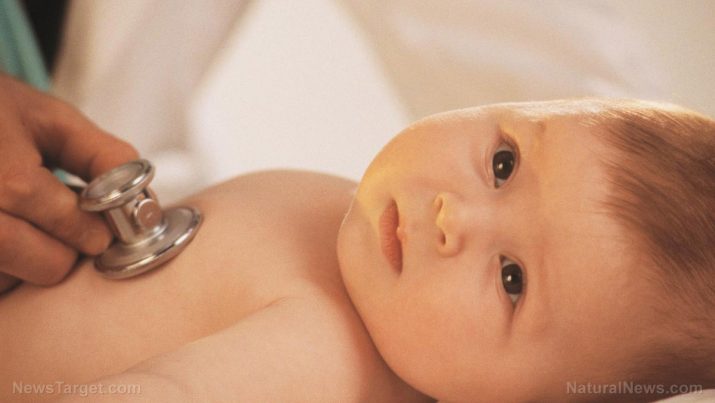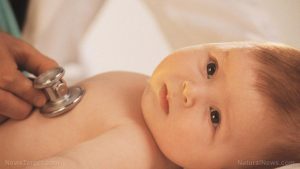
Pectus carinatum – causes, side effects and treatments at NaturalPedia.com
Wednesday, May 30, 2018 by Michelle Simmons
http://www.naturalpedia.com/pectus-carinatum-causes-side-effects-and-treatments-at-naturalpedia-com.html

Pectus carinatum is an abnormality in the chest wall in which the breastbone is pushed outward. It is also known as pigeon chest or keel chest. In this condition, the cartilage that connects the ribs grows abnormally, which causes unequal growth in the areas where the ribs connect to the sternum. Typically, pectus carinatum occurs during childhood and worsens as children grow older. Pectus carinatum may be caused by trisomy 18, trisomy 21, homocystinuria, Marfan syndrome, Morquio syndrome, multiple lentigines syndrome, or osteogenesis imperfecta.

Known side effects of pectus carinatum
The side effects of pectus carinatum may include chest pain; early exhaustion even with light physical activity; functional defects in the heart and lungs, such as shortness of breath, mild asthma, and mitral valve prolapse; scoliosis or curved spine; and signs and symptoms that are typical of associated connective tissue disorders. In most cases, the condition is asymptomatic in young children.
Body systems harmed by pectus carinatum
The body systems harmed by pectus carinatum include the skeletal, respiratory, and cardiovascular systems.
List of foods or nutrients that prevent pectus carinatum
There is no information on what foods or nutrients prevent pectus carinatum. Nonetheless, there are foods that support bone health. These include organic dairy products, eggs, sardines, salmon, spinach, tuna, collard greens, and orange juice.
Treatments, management plans for pectus carinatum
There are two treatment options for pectus carinatum: bracing and surgery. Bracing for pectus carinatum works like the way braces work on teeth. The brace is worn around the chest and puts pressure on both the front and back to move the breastbone back to its usual position. The brace is worn for at least eight hours a day for a minimum of six months. On the other hand, surgical correction for pectus carinatum involves a technique called the Ravitch Procedure. The mid-chest area is cut to remove the anterior cartilage. Stainless-steel struts are then put across the anterior chest to support the breastbone and are wired to the appropriate ribs on each side. This allows the breastbone to be elevated. The struts are not visible from the outside and are removed later during a surgical procedure.
Where to learn more
- Yoga can increase blood flow, aiding in repair and regeneration of tissue
- Take the versatile approach to better bone health
- Study Suggests Fruits and Vegetables May Improve Bone Health
- Vitamin E found to have bone health benefits: Research finds it improves bone density in postmenopausal women
- Stronger Bones – Without Drugs
Summary
Pectus carinatum is an abnormality in the chest wall in which the breastbone is pushed outward.
Pectus carinatum causes chest pain; early exhaustion even with light physical activity; shortness of breath, mild asthma, and mitral valve prolapse; scoliosis or curved spine; and signs and symptoms that are typical of associated connective tissue disorders.
Pectus carinatum can be treated with bracing or surgery.
Sources include:
Tagged Under: Tags: Pectus carinatum





